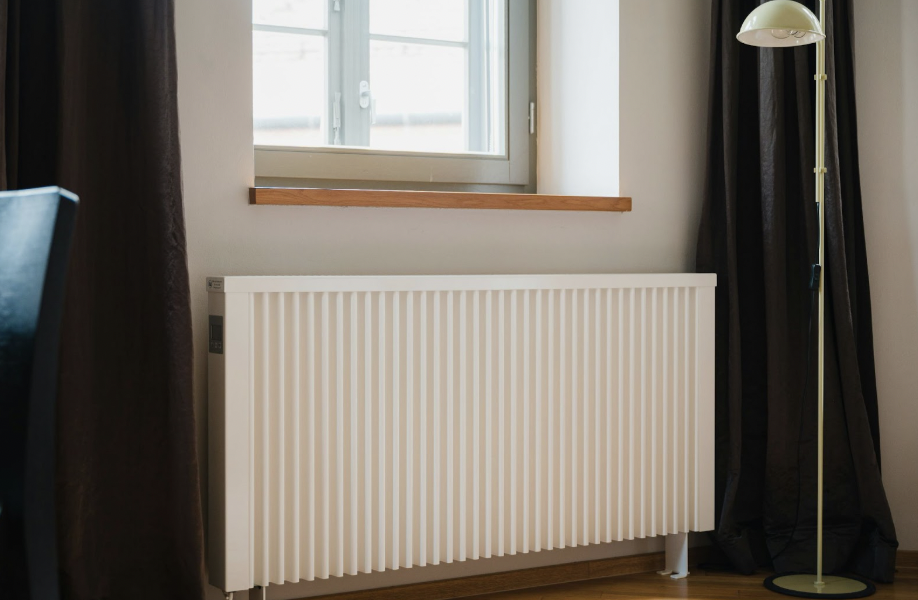Are you thinking about replacing your home radiators? Maybe one is leaking or you just want to upgrade your system for better heating efficiency. Whatever the reason, it’s a good idea to understand radiator replacement costs before beginning the process. Costs can vary significantly depending on the type and size of radiator you choose, as well as the complexity of the installation. But first…
Unless you know what factors affect these costs and how, you may end up paying more than necessary or making poor decisions which result in expensive mistakes or problems later on.
Table of Contents
- 1 What You’ll Learn:
- 2 Reasons For Fluctuations In Radiator Replacement Prices
- 3 Size Really Does Matter
- 4 Installation Complexity Can Make Or Break Your Budget
- 5 The Real Estate Angle Nobody Talks About
- 6 Hidden Costs You Need To Know About
- 7 Location, Location, Location
- 8 Material Quality Makes A Difference
- 9 Energy Efficiency Pays Off
- 10 Getting The Best Value
- 11 When Replacement Makes Sense
- 12 The Bottom Line
What You’ll Learn:
- Reasons For Fluctuations In Radiator Replacement Prices
- Factors That Can Change The Cost Of Replacing Your Radiator
- The Maths Behind Figuring Out Your Radiator Replacement Costs
- Tips For Saving Money On Your Radiator Replacement Project
Reasons For Fluctuations In Radiator Replacement Prices
Radiator replacement isn’t a “one size fits all” process.
Prices for replacing a radiator can range from as little as $100 to over $2,500 per unit. To budget correctly for your next home improvement project and get a better idea of exactly what you’ll be paying for in materials, labor and other installation costs, you can use this radiator replacement cost calculator to get an estimate based on your specific needs.
Homeowners spend approximately $1,500 on radiator replacement per unit according to recent data, but the actual cost of replacement depends on several different key factors. We’ll break those down now…
Heating systems come in different types, and they each have their own costs associated with them. Hot water radiators are on the lower end of the price range for most homes, while steam radiators push costs closer to the higher end. Electric radiators fall somewhere in the middle but have their own installation peculiarities. Here’s what many homeowners don’t realize though…
The material the radiator is made of matters just as much as the type. Cast iron radiators are on the more expensive end but are incredibly durable. Stainless steel radiators have a more modern appearance but also command a premium price tag. Steel radiators are the best standard option without breaking the bank.
Size Really Does Matter
Want to know one of the biggest cost drivers for replacement projects?
Size.
Radiators come in a variety of sizes, with the most budget friendly being small 60cm x 60cm units. These are perfect for smaller rooms like bathrooms or small bedrooms. Mid-sized radiators are the most common for regular sized rooms as they provide adequate heating without costing too much money.
Need a larger radiator for a big living room or open plan space? Large units can quickly drive up your total costs as they use more material and take longer to install. You’ll also likely need additional pipework changes when moving to bigger radiators as well.

The calculation is simple: more capacity to heat your home means more costs associated with it.
Installation Complexity Can Make Or Break Your Budget
Here’s something that most people don’t know about until they have to hire an installer…
Installation itself can cost between $200 and $800 in labor costs alone. A simple, straight-forward replacement where you’re installing a new radiator in the same spot that the old one was is going to be the least expensive option available.
If you need to move the radiator to a different wall or add a completely new unit in a space that didn’t have one before, those labor costs are going to increase dramatically. Why?
Types Of Installation Add-Ons That Increase The Total Cost:
- New pipework installation
- Modifications to existing pipework/plumbing
- Valve replacements/upgrades
- System pressure testing and safety checks
- Wall repairs and redecorating
Professional installers charge $100-150 per hour on average for their services, and a simple radiator replacement takes about 2-3 hours. Complex or multi-unit installations can take 4-6 hours or more. Which is a big difference in your overall bill.
The Real Estate Angle Nobody Talks About
Upgrading your home’s radiators isn’t just about heating comfort – it also affects property values.
In real estate, modern, efficient heating systems are a huge plus. When buyers are looking at properties, updated and efficient heating is a major selling point and feature. Old, inefficient radiators are a red flag that indicates deferred maintenance or future problems.
Replacing all radiators in a house costs on average between $7,000 and $15,000 for 10 to 15 radiators. While that’s a lot of money, doing so can make your home more marketable and allow you to ask for more money when you sell.
Take a look at the following examples:
Buyers touring a house see brand new radiators and efficient heating immediately. They don’t need to do mental math about repair/replacement costs or deduct a radiator budget from their home buying budget.
They also know they won’t have to deal with cold rooms or other heating problems within the first year of ownership which is a huge plus for many potential buyers.
Hidden Costs You Need To Know About
Here’s something most people gloss over or aren’t aware of at all…
Beyond The Basic Replacement Process:
- Removal and disposal of existing radiators (charges extra for some installers)
- Boiler compatibility check (old boilers may not work with new radiators)
- Thermostatic radiator valves (TRVs cost an additional $30-50 per radiator but can improve heating efficiency)
- System flushing (usually needed before new radiator installation)
- Wall brackets and mounting hardware (may not always be included in a quote)
These can tack on an additional $200-500 to your overall project cost. But here’s the kicker…
Most of them are actually worth it in the long run. TRVs alone can save you 20-30% on your heating costs over the lifetime of the radiators. Flushing your system can also help new radiators perform at their best from day one.
Location, Location, Location
Location can also dramatically impact prices.
Urban areas and places with higher costs of living have higher labor costs on average. Regional cost of living differences can account for anywhere from 20% to 40% changes in total project costs.
Material Quality Makes A Difference
Materials quality and performance matter too.
Budget ($100-300): Suitable for basic heating needs but may not last as long. Mid-range ($300-800): Best value for money in terms of quality, performance and durability. Premium ($800-2,500): Designer models with higher quality materials and aesthetics.
The truth?
Cheap radiators will cost you more money in the long term through increased energy bills and needing to replace them sooner than expected.
Energy Efficiency Pays Off
Here’s something else that you should keep in mind when choosing new radiators…
Energy-efficient radiators cost 10-20% more initially but can reduce your heating bills by as much as 30%. Over a 10-15 year lifespan, that can add up to thousands of dollars in savings.
Getting The Best Value
Want to get the most bang for your buck?
Money-Saving Tips
- Replace multiple radiators at once to save on labor
- Schedule installations during off-peak seasons (spring/summer)
- Get quotes from at least 3 qualified installers
- Choose mid-range radiators for the best balance
- Ask about package deals or discounts for whole-house replacements
Cutting costs on installation quality is not a good idea. A poor job can result in leaks, inefficient heating, and other problems that will cost you much more money in the long run.
When Replacement Makes Sense
Not every issue with your radiator requires complete replacement.
Radiator replacement is best done when they are rusting, leaking frequently, over 15 years old, or if you are doing a major renovation project. Repair is better for most other, less serious issues.
The Bottom Line
Radiator replacement costs vary significantly depending on the type, size and material of the radiator chosen as well as the installation complexity and location of the project. Homeowners and real estate investors should understand these factors in order to budget correctly and make decisions which maximize their value.
A quality radiator installation is an investment which pays dividends for many years to come through reduced energy bills, higher home values and increased marketability when it comes time to sell. Get several quotes, understand exactly what is included in the quoted price, and choose radiators which suit both your budget and long term plans.


